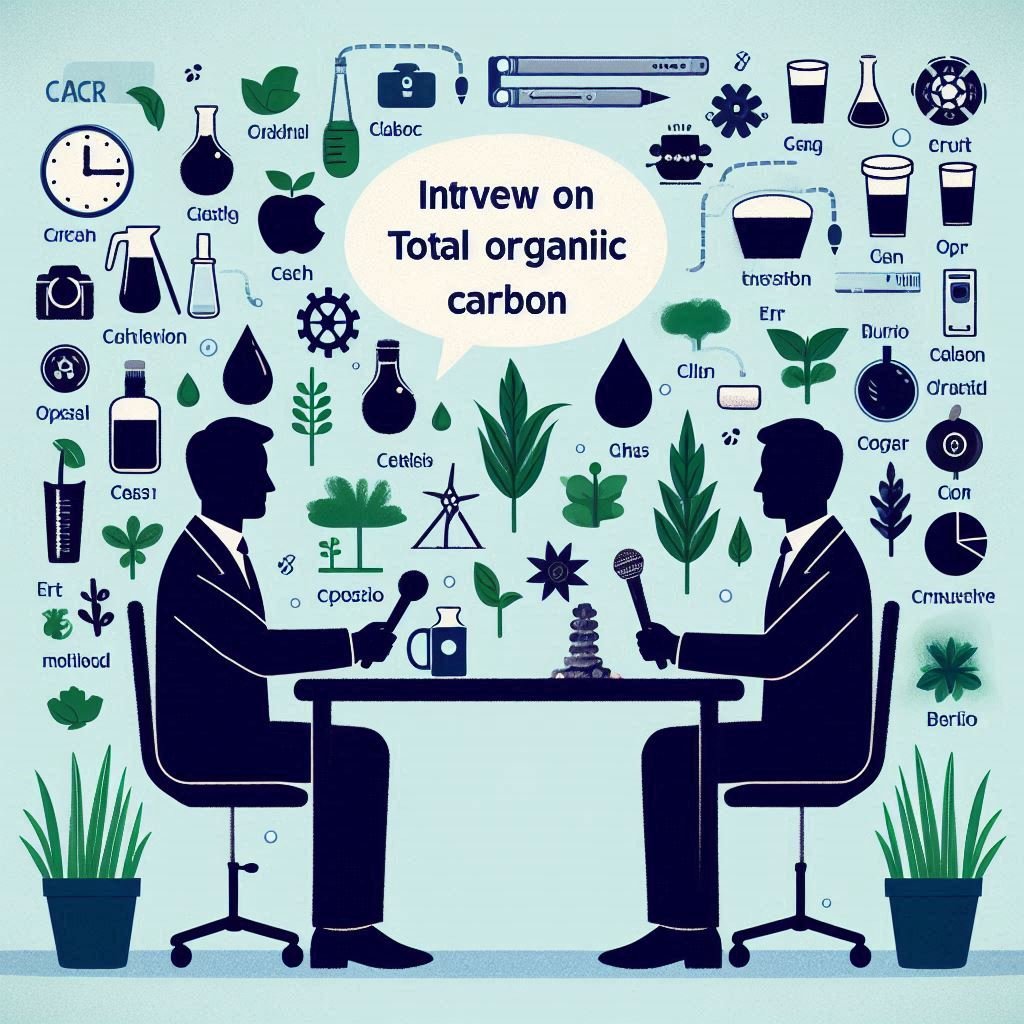Interview Questions On TOC Analyzer
A TOC analyzer is essential for assessing the cleanliness or contamination of water, particularly in high-purity or regulatory environments. It’s a key quality control and environmental compliance tool.

1. TOC Analyzer
A TOC Analyzer (Total Organic Carbon Analyzer) is a device used to measure the amount of organic carbon present in a sample. TOC is an important parameter in pharmaceutical industries because it reflects the level of organic contamination (particularly in water).
2. What TOC Analyzer measures?
- Total Organic Carbon (TOC): The amount of carbon bound in organic compounds in a sample.
- Sometimes it also measures:
- Total Carbon (TC)
- Inorganic Carbon (IC)
- Non-Purgeable Organic Carbon (NPOC)
- Purgeable Organic Carbon (POC)
3. How TOC Analyzer Works?
TOC analyzers typically use oxidation to break down organic compounds into carbon dioxide (CO₂), which is then measured. The main oxidation methods include:
- High-temperature combustion (e.g., 680–1000°C)
- UV-persulfate oxidation
- UV oxidation alone
- Wet chemical oxidation
After oxidation, the resulting CO₂ is detected using instruments like:
- NDIR (Non-Dispersive Infrared) detectors
- Conductivity detectors
4. What are the common applications of OC Analyzer?
- Pharmaceutical industry: For validating purified water and water for injection (WFI)
- Environmental monitoring: Measuring pollution in wastewater, rivers, or lakes
- Semiconductor manufacturing: Ensuring ultra-pure water (UPW) quality
- Food and beverage industry: Monitoring water used in production
- Power plants: Monitoring boiler feed water and condensate
5. What does TOC stand for?
TOC stands for Total Organic Carbon—a measure of the total amount of carbon in organic compounds present in a sample.
6. Why is TOC analysis important?
It is crucial for:
- Ensuring water purity in pharmaceuticals and semiconductors
- Monitoring pollution in environmental samples
- Quality control in food, beverage, and power industries
7. How does a TOC analyzer work?
TOC analyzers oxidize organic compounds to carbon dioxide (CO₂), which is then detected, usually via an NDIR sensor.
8. What oxidation methods are used in TOC analysis?
- High-temperature combustion
- UV-persulfate oxidation
- Wet chemical oxidation
- UV light oxidation
9. What is the difference between TOC, TC, IC, and NPOC?
- TOC: Total Organic Carbon
- TC: Total Carbon (organic + inorganic)
- IC: Inorganic Carbon (e.g., carbonates, bicarbonates)
- NPOC: Non-Purgeable Organic Carbon (organic carbon remaining after purging volatile compounds)
10. Where are TOC analyzers used?
- Pharmaceutical water testing (e.g., WFI)
- Environmental water monitoring
- Semiconductor ultra-pure water analysis
- Power plant boiler and cooling water
- Food and beverage water quality
11. Is TOC testing required by regulatory bodies?
Yes. Agencies like USP, EPA, ISO, and FDA often mandate TOC testing for compliance in various industries.
12. How often should a TOC analyzer be calibrated?
Typically, calibration is recommended:
- Annually or semi-annually
- As per manufacturer guidelines
- After major maintenance or repair
13. What type of samples can a TOC analyzer handle?
Primarily liquid samples (like water), though some analyzers can handle solid or gas samples with special configurations.
14. What is the detection range of a TOC analyzer?
Ranges vary by model, but generally:
- From a few ppb (parts per billion) to several thousand ppm (parts per million)
15. What can interfere with TOC measurements?
- High levels of chloride, particulates, or inorganic carbon
- Insufficient oxidation or poor sample mixing
- Improper sample preparation
16. What are signs of TOC analyzer malfunction?
- Fluctuating readings
- High background signals
- Calibration failures
- Error codes on display
17. What should I consider when choosing a TOC analyzer?
- Sample type and matrix (e.g., ultrapure vs. wastewater)
- Detection limit and range
- Compliance with industry standards (e.g., USP <643>)
- Ease of maintenance and automation
- Software/data handling capabilities
Related
Further Reading


